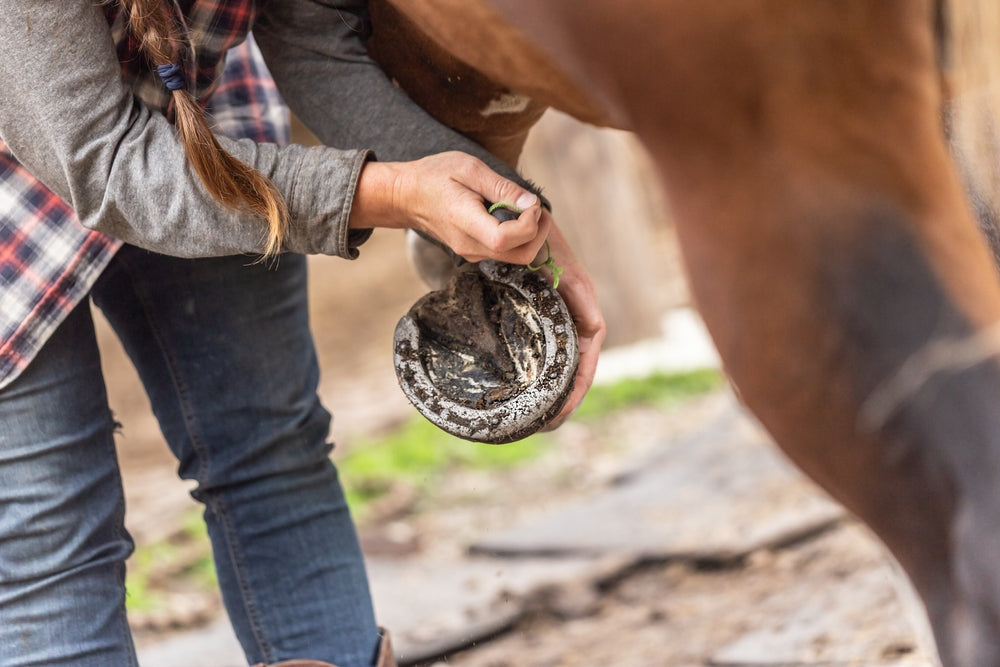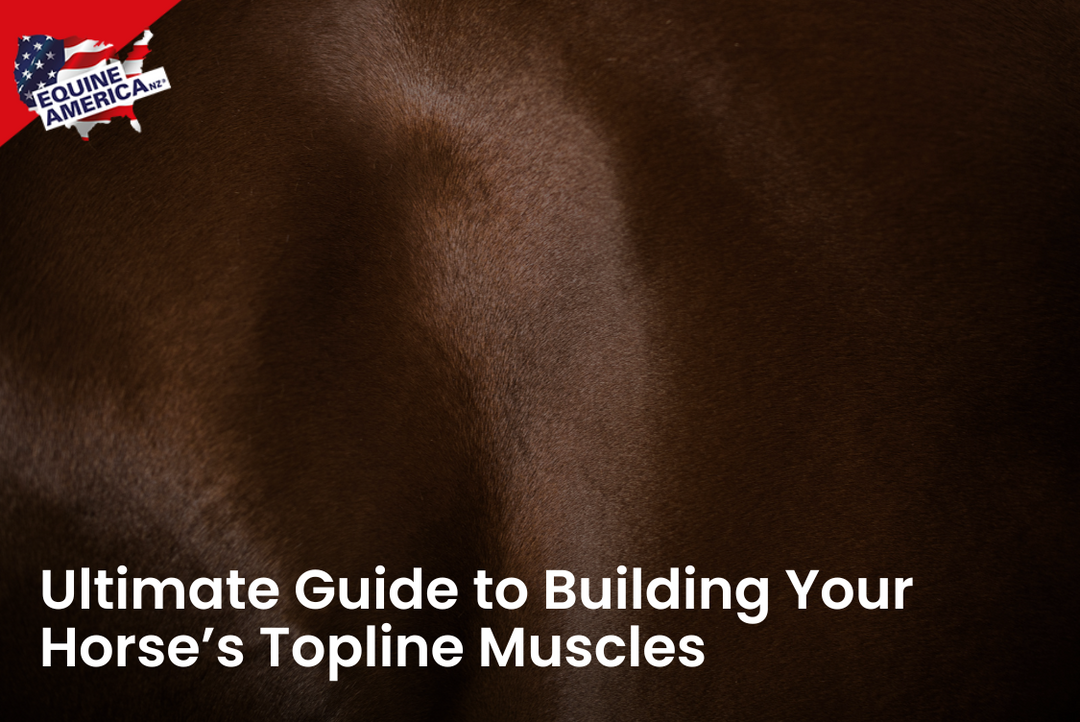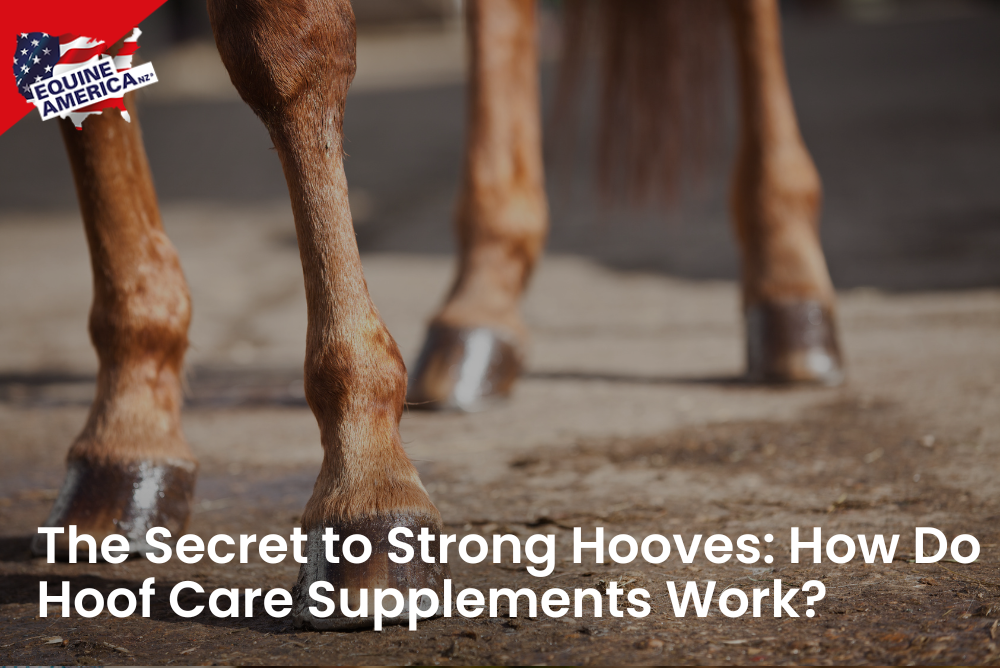Grooming, feeding and exercise are essential components of horse care, but one aspect that is often overlooked is hoof health. Strong and healthy hooves are crucial for a horse's overall well-being, as they support the animal's weight and facilitate movement. Neglecting hoof care can lead to a range of issues, from cracking and splitting to lameness and pain. To keep your horse's hooves in top condition, it's essential to take a proactive approach to hoof care.
In this blog, we'll cover the five steps to healthy hooves, including tips on how to maintain good hygiene, proper nutrition, and regular hoof trimming. By following these steps, you can help ensure your horse's hooves are healthy and strong for years to come.
Step 1: Clean And Dry Hooves Daily
Keeping your horse's hooves clean and dry is the first step to achieving healthy hooves. Infections and other issues may result from dirt and debris accumulating in the hooves. Additionally, moisture can cause the hoof to soften, making it more vulnerable to damage.
Start by using a hoof pick every day to remove the dirt from your horse's hooves. This will clear out any dirt or debris that has gathered inside the hoof. Clean the sole and frog with a stiff brush after removing the hooves.
It's essential to check that your horse's hooves are dry as well because moisture can promote bacterial and fungal growth. Consider using shavings or sawdust to absorb moisture if you keep your horse in a moist environment, such as a wet paddock or stable. To further aid in keeping the hooves dry, you can use a hoof-drying solution, which is sold at many equestrian supply stores.
Another suggestion is to refrain from hosing down your horse's legs and feet, especially in cold weather, to help prevent moisture buildup. If your horse gets wet, thoroughly towel-dry the hooves and think about using a hoof conditioner to help retain moisture.
You can significantly reduce the risk of infections and other hoof issues by maintaining the cleanliness and dryness of your horse's hooves. To keep the hooves on your horse strong and healthy, make sure to incorporate this step into your daily routine.
Step 2: Provide Proper Nutrition
Healthy hooves must be maintained with a balanced diet. All of the necessary nutrients, such as protein, carbohydrates, fats, vitamins, and minerals, should be included in your horse's diet.
Protein, which can be found in hay, pasture grasses, and legumes like alfalfa, is crucial for healthy hoof growth and repair. Your horse needs carbohydrates for energy, such as grains and sugars, but you should only give them to him in moderation because too much of them can cause laminitis and other issues with his feet.
Since fats provide the building blocks for hoof cells, they are also crucial for the health of the hooves. High-fat feeds like rice bran, flaxseed, and soybean oil all contain fats.
For healthy hooves, vitamins and minerals are also essential. For instance, zinc and copper are crucial for hoof strength and growth, whereas vitamin A is required for the development and repair of hoof tissue.
Working with a veterinarian or equine nutritionist to create a balanced diet tailored to your horse's specific requirements will help you ensure that your horse is receiving the right nutrition.
Step 3: Regular Hoof Trimming
For healthy hooves to be maintained, regular hoof trimming is essential. Numerous issues, including cracking, splitting, and even lameness, can result from overgrown hooves.
Horses should ideally have their hooves trimmed every 6 to 8 weeks, though this can vary based on each horse's specific requirements. To get the best results, it's crucial to find a qualified farrier with experience trimming and shaping hooves.
A hoof trim involves the farrier removing extra hoof material, shaping the hoof to keep it balanced and aligned, and looking for any indications of lameness or other problems. Regular hoof trimming can also aid in avoiding common issues with the hoof, like thrush and abscesses.
Finding a competent and knowledgeable farrier is essential because it should be noted that excessive trimming can also be damaging to your horse's hooves. Your horse's hooves can stay healthy with regular hoof trimming, along with the right diet and care.
Step 4: Use Proper Hoof Protection
In addition to providing proper nutrition and regular trimming, it's important to protect your horse's hooves from wear and tear. Hoof protection can help prevent cracks, chips, and other damage that can lead to discomfort and lameness.
One common way to protect hooves is through the use of shoes. Horses that are used for riding, racing, or other strenuous activities may require shoes to prevent excessive wear and tear. Shoes can also be helpful for horses with weak or brittle hooves.
However, it's important to note that not all horses require shoes. Horses that are primarily kept in pasture or only used for light riding may not need shoes, as their hooves are naturally strengthened through regular activity.
If your horse does require shoes, it's important to work with a qualified farrier to ensure proper fit and maintenance. Ill-fitting shoes can cause discomfort and even lead to injury.
Another form of hoof protection is the use of boots. Hoof boots can be a good option for horses that require protection during riding or turnout, but do not need shoes. Boots are available in a variety of styles and materials and can be a good choice for horses with sensitive or injured hooves.
Finally, it's important to provide a clean and dry environment for your horse to help prevent hoof problems. Standing in wet, muddy areas for extended periods of time can weaken hooves and make them more susceptible to damage.
Step 5: Monitor For Signs Of Hoof Problems
Even with regular hoof care, problems can still arise. That's why it's important to monitor your horse's hooves regularly for any signs of trouble. Here are some common issues to watch out for:
- Thrush: This is a bacterial infection that can occur when the hooves are exposed to damp, dirty conditions. Signs include a foul odour, black discharge, and sensitivity when picking out the hooves.
- Laminitis: This is a serious condition that occurs when the sensitive laminae inside the hoof become inflamed. It can be caused by a variety of factors, including overfeeding on rich pasture, obesity, and systemic diseases. Signs include lameness, heat in the hooves, and a characteristic "founder stance" where the horse rocks back on its heels to take the weight off the toes.
- White line disease: This is a fungal infection that affects the white line of the hoof, where the hoof wall meets the sole. Signs include separation of the hoof wall and sole, a foul odour, and sensitivity when picking out the hooves.
- Cracks and splits: Hooves can develop cracks and splits for a variety of reasons, including poor nutrition, dry conditions, and trauma. While some cracking is normal, deep cracks can allow bacteria to enter the hoof and cause infections.
If you notice any signs of hoof problems, it's important to contact your veterinarian or farrier right away. They can help you determine the cause of the problem and recommend the appropriate treatment. Regular checkups with a farrier or veterinarian can also help catch problems early and prevent them from becoming more serious.
In addition to monitoring for hoof problems, it's also important to keep your horse's living conditions clean and dry. Wet, dirty conditions can increase the risk of bacterial and fungal infections. Regular cleaning and disinfecting of stalls and paddocks can help prevent these issues from occurring.
Final Thoughts
Healthy hooves are crucial for a horse's overall wellbeing and performance. Implementing the five steps discussed in this article can greatly improve your horse's hoof health and prevent issues down the line. Remember to clean and dry your horse's hooves daily, provide proper nutrition, schedule regular hoof trimming, use proper hoof protection, and monitor for signs of hoof problems. By taking these steps, you can ensure that your horse's hooves are healthy and strong, and that they will be able to perform at their best. For high-quality equine supplements to support your horse's hoof health, consider Equine America NZ.
Please give us a call at Equine America NZ today at 0800 440 888 to learn more or leave an enquiry.




